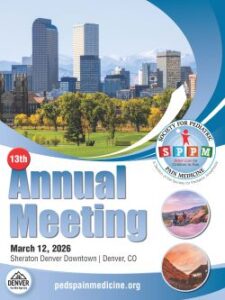An 18-month-old female presents for right hip open reduction, capsulorrhaphy, adductor tenotomy, iliopsoas lengthening, and pelvic osteotomy +/- femoral osteotomy. As part of the procedure, she will undergo bilateral hip arthrograms. She will have a spica cast applied at the end of the procedure. She has a history of developmental hip dysplasia and recurrent hip dislocations but is otherwise healthy. She has not had anesthesia before.
Due to contraindications for other regional techniques, the perioperative team decides to perform a fascia iliaca block as part of the patient’s multimodal pain control. What is a major benefit of performing this technique from a suprainguinal approach rather than infra-inguinal (from below the inguinal ligament)?
Correct!
Wrong!
Question of the Month - July 2024
 SPPM 13th Annual Meeting
SPPM 13th Annual Meeting